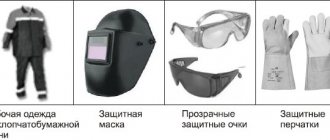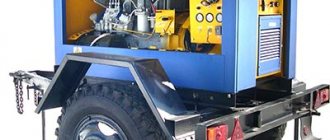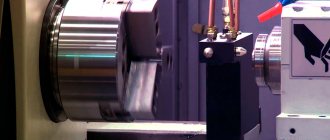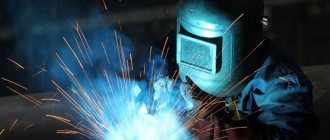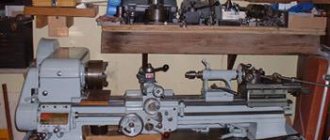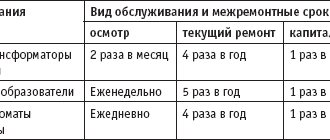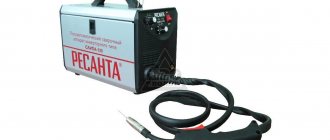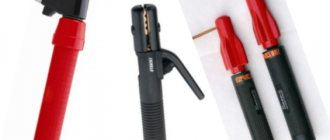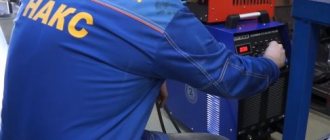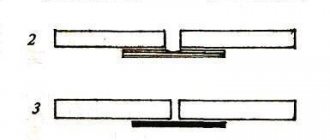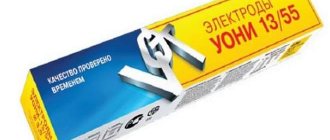Protect your eyes | 02/23/2016
Welding, as a type of joining metal elements, became widespread a little more than a century ago. However, today it is used in many fields of activity, from electronics production to the construction of giant structures. Since the composition of the metals used is very diverse, many types of equipment have been invented and implemented to obtain reliable welds. The most popular among them are welding machines. Let's look at what types of welding machines there are, the pros and cons of each.
Transformers
The transformer is the most traditional type of electric welding machine. At the same time, it is one of the simplest in design. The main design element of this type of welder is a step-down transformer, which converts the mains voltage to the value required for welding. The current strength is changed using different techniques, the most well-known is the displacement of one winding relative to the second. As the gap between the windings changes, the current changes.
A feature of welding transformers is considered to be alternating current at the output, which leads to noticeable spattering of metal and deterioration in the quality of seams. In order to weld non-ferrous metals and improve the quality of arc combustion, fairly massive and bulky components must be added to the structure of the apparatus. The main element - the transformer - is also not compact and light in weight. When using the device for serious work, specific (for alternating current) electrodes and considerable experience of the welder are required.
The efficiency of the device is quite high, reaching 90%, but part of the energy is spent on heating. Cooling is carried out using fans of different power, since it is necessary to cool a unit weighing several tens and sometimes hundreds of kilograms. The use of this type of welding machines is declining today, but they are still in demand due to their low cost, reliability and durability. Transformers are used for welding low-alloy types of steel .
Inverter devices are the best solution for the home handyman
The most popular welding devices today are inverters, also known as pulse welding machines. With the advent of inverters, they made a real revolution in the field of welding equipment. At first they were very expensive and had many disadvantages. However, soon the shortcomings, including the high cost, were eliminated. This led to the popularization of these devices. Today, almost every home craftsman has inverter-type welding machines. If you are going to buy a welding machine for your home, then without finding out their advantages and disadvantages, it is recommended to immediately choose inverter machines.
However, it still doesn’t hurt to understand the design features of inverters, so that in the end the purchased device satisfies all the needs of the master. An inverter is an analogue of transformer and rectifier devices that are devoid of a bulky element - a transformer. The role of a source of current reduction is played by semiconductor elements. The design of the device contains a transformer, which is tens of times smaller, and it is designed to reduce the input mains voltage.
Inverters consume much less electricity compared to their ancient counterparts - transformer and rectifier models. The device eliminates the need to expend energy on heating structural elements. The arc is created quickly enough and is characterized by stable combustion, ensuring decent quality of the seam. The design of inverters also uses stabilizers that convert current, as well as electrical microcircuits consisting of semiconductor elements.
The 220V AC input voltage is supplied to the rectifier unit, in which it is converted to DC. A diode bridge acts as a rectifier. Converts along with alternating voltage and current. The constant current is supplied to the inverter unit, where it is again converted from direct to alternating, but at a higher frequency. Reducing the alternating voltage helps to increase the magnitude of the high-frequency current. A large current and high frequency is converted into direct current, on the basis of which welding operations are performed. Below is a diagram of the operation of the welding inverter.
An increase in the frequency of the current is achieved through semiconductor elements - transistors. Their switching occurs with a frequency of 60-80 Hz. During the operation of the device, strong heating of the elements is observed, so an important point is the use of radiators with fans that help remove thermal energy. To prevent failure of the rectifier unit, a sensor is installed in the design of the device that turns off the power supply when the temperature of the rectifier reaches a critical value of 90 degrees.
Now let’s find out all the advantages of inverters, and find out why these particular types of welding machines have gained wide popularity among home craftsmen:
- High quality welding seam
- High performance equipment
- High efficiency - over 90%
- Economical consumption of electrical energy
- Minor metal spatter
- Smooth adjustment of welding current
- Versatility - ability to weld any metal
- Small dimensions and weight, which makes such equipment mobile and easy to transport
This is interesting!
When should you choose inverter welding machines?
They are chosen by 80% of home craftsmen who perform welding work themselves. The thing is that they are quite inexpensive, and at the same time they have a lot of advantages necessary for the average user. An inverter will not replace a semi-automatic machine, but the first option does not require the purchase of gas cylinders and wire. Welding is carried out using electrodes of different sizes. Above are the main types of welding machines that are suitable for home and garden use. It should be concluded that inverter-type models are best suited for home use, and for professional use it is better to choose semi-automatic ones. Transformers and rectifiers are a thing of the past, which, due to their shortcomings, are becoming increasingly rare.
Rectifiers
Welding rectifiers can be considered an improvement on transformer devices. In welds obtained using rectifiers, those defects that are caused by the use of alternating current are practically eliminated. The devices, in addition to the step-down transformer, have a diode block (rectifier), control, starting and protection elements in their design. Alternating current not only changes voltage, but is also converted to direct current. This makes it possible to obtain an even, stable arc. Accordingly, metal spattering is reduced, and the seam is of higher quality. You can work with any electrodes.
The scope of use of the welder is also expanding - you can join not only low-alloy “ferrous” steels, but also non-ferrous metals, stainless steel, cast iron (using appropriate electrodes). Since direct current has polarity, you should not forget about this - when connecting the electrodes, this parameter should be taken into account. Some welding work is purposefully performed with reverse polarity (aluminium welding).
Many manufacturers today are reducing the production of this type of household appliances. If we talk about professional use, they are still used quite widely . Disadvantages include heavy weight, the need for a qualified welder, and a serious voltage drop in the electrical network during the welding process. Advantages: low price, reliability and good seam quality.
Torus 200c Super
Photo: https://beru.ru
The Torus brand is well known among professional welders. The inverters of this Moscow company may not be the most powerful mma inverters, but they easily survive the warranty period even with the most severe use, without presenting any unpleasant “surprises” even after the warranty expires. The MMA/TIG inverter “200c Super” will allow the owner to operate at a current of up to 200 A at a duty cycle of 100 - and this means the possibility of full, long-term work with electrodes up to 5 mm in diameter. It is important that this inverter can be certified by NAKS (this option will be more expensive than an uncertified one by an average of 2 thousand), which is the best proof of the high quality of welds created by the device. The merit of this is in the microprocessor circuit for generating the current curve - this ensures not only its optimal shape, but also stability of characteristics under high voltage drops. The inverter will be equally convenient for both a welder with many years of experience and a beginner - it is extremely easy to ignite and hold an arc on it, and in TIG mode in the same way as when welding with a stick electrode. The minimum current is 20A, which makes it possible to use the “200c Super” inverter for argon welding of the thinnest parts.
Welding machine 200c Super (MMA)
Advantages:
- easy to use
- unlimited duration of permanent work
- operation during voltage dips up to 165 V
Flaws:
- like all other brands, NAKS certification requires additional payment
Semi-automatic
Semi-automatic welding machines in an environment of inert or active gases, or simply semi-automatic devices, are more complex devices than transformers or rectifiers. However, they are more convenient to use. Often used in car body repairs, they are widely used in everyday life and in private households.
The structure consists of the following components:
- transformer;
- rectifier;
- wire feeding drive;
- gas cylinder;
- sleeves with a burner.
Welding of parts is carried out with a wire melting in an electric arc, which is located in a protective gas environment during the process. The current is most often adjusted in steps; the wire feed speed is also subject to change. The ratio of these parameters establishes the required operating mode .
Various models of semi-automatic machines work:
- only with gas;
- with or without gas (switchable);
- only without gas.
If work is carried out without gas, a special wire (flux-cored) is used. Flux-cored wire differs from ordinary flux-cored wire in that its composition, in addition to metal, includes flux. When the flux components burn, a cloud of protective gas is formed, which prevents oxidation of the weld pool by air. In addition, the active elements of the flux composition give the metal the necessary parameters, and the arc becomes more stable. This does not require a gas cylinder, which is convenient, but the wire itself is significantly more expensive.
When working with different metals, different gases are used - carbon dioxide when welding iron, a mixture of argon and carbon dioxide when working with steel, and argon when welding aluminum. Gas cylinders should be used industrial or branded.
Semi-automatic machines are characterized by high productivity and produce excellent quality welds on various metals. Disadvantages include spattering of metal and high consumption of materials for waste.
Main settings
Main technical characteristics of the semi-automatic machine PATON PSI 160.
As an example, let us consider the main characteristics of the equipment of welders working in manual mode. We are talking about transformers, rectifiers and a product of semiconductor technology - an inverter. With their help, you can connect most metals and alloys: from aluminum to stainless steel.
The most important parameters are:
- Voltage . For household appliances, this figure is 220 V. Industrial appliances operate from 380 V.
- Power consumption . An important parameter that determines the capabilities of the unit. The unit of measurement is kilowatt. The maximum welding current depends on the power.
- Duration of switching on . Shows the percentage ratio of the operating mode to the resting mode at maximum current levels over a ten-minute interval. For example, a duty cycle of 60% indicates that in 10 minutes the device will only work for 6 minutes. For transformers, this figure, as a rule, does not exceed 50-60%. Inverters demonstrate great endurance - their duty cycle varies in the range of 70-80%.
- Open circuit voltage . The higher this parameter, the simpler the arc formation process.
- Dimensions and weight . The convenience of placing and transporting the device depends on these indicators. A modern inverter can be easily moved around the site with the efforts of one person.
You should also pay attention to the operating requirements . An experienced specialist must know what cross-sectional wire should be used to ground the welding transformer. For most models, it is enough to use a copper cable with a diameter of 6 mm. A steel rod with a cross-section of at least 12 mm is suitable as an alternative material.
For industrial enterprises, devices with several welding stations are produced. In this case, it is necessary to connect a ballast rheostat to each post to adjust the current parameters.
Inverters
Devices of this type are also called pulsed. Today, welding inverters are considered one of the most common devices due to their light weight and general availability. And if 10 years ago inverters were expensive and not very reliable, now these shortcomings have been eliminated . The use of inverter technology today results in a reduction in the size of the transformer, an increase in the quality properties of the arc, optimization of efficiency, and a reduction in metal spatter during welding.
The welding inverter consists of a power transformer, the purpose of which is to reduce the mains voltage to the required value, a block of electrical circuits and a stabilizer choke, necessary to minimize current ripple.
The supply voltage is supplied to the rectifier in the inverter, at the output of which a circuit block transforms direct current into alternating current with a high frequency. This alternating current, obtained at the output of the power unit, is supplied to a high-frequency welding transformer, which is more compact and lighter than a conventional network converter. The voltage at the output of the welding transformer is rectified again and supplied to the arc.
Major global and Russian manufacturers
Here is a list of welding equipment manufacturers that have proven themselves on the Russian market:
- EWM . Leading manufacturer from Germany. This company is distinguished by innovative developments - back in 1988 it produced the first TIG AC/DC inverter.
- KEMPPI . A Finnish brand whose products comply with all European and international standards related to quality, ecology and safety.
- CEDAR . Domestic manufacturer specializing in the production of welding equipment and auxiliary tools. It has a developed network of service centers.
- SVAROG . A Russian brand whose production facilities are located in China. Compliance with the requirements of state standards is monitored by NAKS specialists.
- ESAB . A famous Swedish company that has been producing welding equipment and consumables for more than 100 years. One of the most reliable brands whose products are valued all over the world.
- BlueWeld . Another European manufacturer that appeared on the Russian market in 2002. Over the past time, it has established itself as a manufacturer of reliable and high-quality devices that meet the requirements of GOST, TUV and ISO 9001.
Argon arc welding machine
This type of welding equipment uses special non-consumable tungsten electrodes; the protection gas is helium or argon..
An argon arc apparatus using a tungsten electrode contains the following components:
- a source that provides direct or alternating welding current;
- regulation device for working with current;
- set of burners for use with different voltages;
- control circuit providing welding cycle coordination and protection;
- stabilizing device for excitation and alignment of the arc.
Units of this type are used if there is a need for high-quality welding of non-ferrous metals.
What it is?
Welding equipment is units and installations that serve as a source of energy for connection, depending on the mode of work . When carrying out electric welding, the connection is made by exposure to a high-power electric arc, which melts the surface of the workpiece and the filler material. The liquid metal is mixed in the weld pool and, after crystallization, forms a seam.
Gas welding equipment uses flammable mixtures of technical gases as a heat source. For their transportation, special cylinders are used, to which shut-off valves and a reducer are attached to regulate the pressure.
Over the period of existence of welding technology, many joining methods have been developed, depending on the approach to the joining process and the types of equipment used. The most common types of welding are:
- automatic;
- semi-automatic;
- argon;
- point;
- induction;
- termite;
- plasma;
- laser;
- contact;
- friction;
- reflow.
For each type of metal and alloy, there is an optimal joining method. In addition, the overall dimensions and thickness of the workpiece are important factors.
In addition to equipment for performing work, there are also accessories that play a supporting role. They are divided into two groups:
- Additive and auxiliary materials. This includes coated electrodes for manual welding, wire and rods for argon arc welding, flux for automatic operation and other materials. In addition, this category includes technical gases, both flammable and those that perform the function of protecting the weld pool.
- Tools and accessories. This group includes torches, electrode holders, pliers, gas reducers, hand guns, cooling modules and other devices.
Spot welding machine
Spot welding is one of the types of contact welding of the thermomechanical class. The process itself consists of several moments. To begin with, the parts, folded in the required manner, are placed between the electrodes and compressed with each other, after which they are heated until plasticity is achieved and are deformed together. Welding speed in factory conditions is up to 10 points per second.
The parts are heated using an instantaneous (0.01–0.1 sec.) welding current pulse. This rapid impulse makes it possible to achieve heating of the metal until it melts, which leads to the appearance of a liquid zone common to both parts. After the current stops, the parts are still aligned, pressed against each other until the temperature drops and the molten point solidifies. Compression of parts stops with a time delay to create conditions for better crystallization of the metal.
The advantages of spot welding include cost-effectiveness, reliability and strength of the seam, and the ease of achieving automation. Unfortunately, this type of welding seam is not airtight, which limits the scope of its use. .
Quattro Elementi MultiPro 2100
Photo: https://beru.ru
If you are not chasing new welding inverter products in 2022, then this welding machine is created especially for you. It contains almost the maximum possible versatility: the “Italian” is capable of working both as a semi-automatic and cooking in MMA and TIG modes. Of course, with a maximum current of 160 A and a low duty cycle, it cannot be classified as professional even if one wants to, but in a personal workshop its capabilities will be sufficient. Taking into account the fact that arc force, anti-stick and “hot start” have been introduced into the design of the device, it is difficult to require anything else for the MMA mode if you are working with electrodes with a diameter of 2-3 mm. Need to weld thin iron? Well, put a spool of wire and connect the torch. In MIG mode, the device is capable of operating in a two-stroke or four-stroke circuit, although this is not considered such a serious advantage - it would be better if the manufacturer expanded the TIG mode adjustments.
Welding machine MultiPro 2100 (TIG, MIG/MAG, MMA)
Advantages:
- combination of welding MMA, MIG, TIG DC
- ease of use
- digital display
Flaws:
- limited power
- limited transportability
Gas cutting and welding machine
Gas welding involves heating the part until it melts with a high temperature flame . In this case, flammable gases are used - hydrogen, natural gas, acetylene. A distinctive property of these gases is their good combustion in air. Most often, acetylene is used in gas welding machines, which is easily obtained using calcium carbide and water. The combustion temperature of this gas is 3200–3400 °C.
Advantages of gas welding and metal cutting:
- Simple technology.
- No access to the electrical network is required, no need to use electric current.
- The equipment used for welding is quite simple.
It should be noted, however, that gas welding will not provide high speed and productivity, because it can only be done manually.
When gas welding, serious attention is paid to preparing parts, regulating the power of the torch, and installing it in the desired position.
Types of Welding Equipment
Now let’s look at the equipment not from the point of view of their design, but by type of operation
. This point is no less important when choosing equipment. There are several types of welding:
- Manual arc (MMA).
- Semi-automatic in a gas environment (MIG/MAG).
- Argon-arc (TIG).
- Spot.
- Gas.
- Plasma.
In each individual case, different types of welding machines can be used. But there is also universal equipment that combines different capabilities: MMA + MIG; MIG+TIG; MMA+TIG and “3 in 1”.
Machines for manual arc welding (MMA)
Most often, MMA welding is used for work in small workshops and in domestic conditions - at home, in the country or in the garage. During the work process, you can use any type of equipment
(transformer, rectifier or inverter). The electrode is a wire coated with a special coating. The resulting electric arc melts the electrode, connecting the metal being welded. And the coating, when burned, forms a gas cloud above the weld pool, protecting it from interaction with oxygen.
Manual arc welding requires some skill as you have to constantly control the distance between the wire and the surface being welded to ensure a stable arc. Slag forms on the seam, which subsequently requires cleaning. The MMA method is used to weld various types of ferrous metals, cast iron, stainless steel and some non-ferrous metals.
Machines for semi-automatic welding (MIG/MAG)
The welding process takes place in a gas environment - inert (MIG) or active (MAG). The gas performs the same protective function as the coating on MMA electrodes, but is more effective. The welding wire is fed into the work area automatically, and the device is moved along the surface manually - hence the name. Transformers, rectifiers, and inverters are suitable for operation. The latter is used more often in modern conditions.
Semi-automatic is preferable when joining carbide alloy steels, all types of non-ferrous metals and when welding thin-walled materials less than 1 mm thick. Due to automatic wire feeding, time is saved, which means that a larger amount of work can be completed in the same period of time.
Tig welding machines
This technique is suitable for joining any metals, but is inferior in speed to a semi-automatic one. The equipment is similar to that used for MIG/MAG, but the gas used is argon and the electrode is made of an infusible material (graphite or tungsten). A binding material is supplied to the weld pool zone - rods with a composition similar to the metal being welded. Argon arc welding is expensive and less productive than semi-automatic welding, but it allows you to obtain a very smooth and high-quality seam. The quality of argon arc welding depends not only on the skills of the welder, but also on the selected shielding gas, as well as on the welding machine. The best option would be an inverter
with the ability to switch it to alternating and direct current.
Spot welding machines
This welding method belongs to the thermomechanical class. Spot welding machines come in several types:
- portable – suitable for home use;
- stationary – for industrial enterprises;
- double-sided - connect sheets of metal on both sides;
- one-sided - used where access to the reverse side is impossible.
The spot welding method mainly welds products made of thin sheet steel.
. The principle of operation is simple: the parts are overlapped with each other, electrodes on both sides heat them to a state of plasticity, fusing them together at the point of contact. The pulse current makes the heating time almost instantaneous - from 0.01 to 0.1 seconds. The result is a strong and reliable seam in a very short time. The downside is that it is impossible to achieve tightness using this method.
Gas welding equipment
There is no need to use a traditional electric welder. All equipment can consist of two gas cylinders with acetylene or propane and oxygen, hoses and a burner.
The mixture of gases during combustion reaches temperatures above 3000 degrees. The edges of the surfaces to be welded are heated with a flame, adding filler wire to the weld pool. The burner can be used to regulate the flame strength. If you increase the oxygen supply, it will blow out metal melted under the influence of temperature, not welding the product, but cutting it into two parts.
The method is applicable in conditions where there is no access to electricity
.
The technology is simple, but requires careful preparation of parts and skills in regulating the burner power. The disadvantages include low performance. If you have a universal torch, the equipment can also be used for cutting metal products
.
Plasma cutting machines
Plasma is a gas containing charged particles that conduct electricity. The welding/cutting process is carried out as follows: inert gas is supplied through hoses to the torch, where it is ionized, passing between two electrodes, heated and transformed into a plasma jet. The resulting arc can reach a temperature of more than 30 thousand degrees.
There are three kinds of suitable plasma cutting machines
, with different characteristics:
- microplasma – 0.1-25 A;
- average – 25-150 A;
- high current device - above 150 A.
During the cutting process, the metal melts, and the ionized jet washes it away. If it is necessary to connect products, then it is enough to reduce the force of the plasma flow and add filler wire.
Plasma welders are often used for cutting. The advantage is that you can cut even a thick layer of material. And when working with thin-walled steel, edge deformation does not occur. The downside is the high cost of the equipment.
Fast and Furious-161
Photo: https://beru.ru
Our review of professional inverter welding machines includes the Forsazh-161 model. This welding inverter produced by the Ryazan Instrument Plant, although it does not impress with the declared characteristics or ultra-modern design, will give the professional exactly what he needs - reliability and accuracy of the formation of the current-voltage characteristic of the welding current in the MMA and TIG modes. In both cases, the maximum welding current is 160A, but continuous operation is possible with a current of no more than 100A. Consequently, this inverter is most suitable for working with fairly thin metal that does not require deep penetration at high current. Among the advantages of the device is the ability to work with strong voltage drops - the manufacturer’s declared performance at 140V in a socket is perfectly confirmed in practice. A “soft” arc is easy to ignite and burns without much metal spattering. The automatic fan control used in the inverter based on a signal from a temperature sensor significantly reduces the amount of dust sucked into the housing, accordingly making the need to clean the output stage radiators less frequent.
Welding machine 161 (TIG, MMA)
Advantages:
- stability of characteristics during voltage sags
- high reliability
- automatic activation of “anti-stick” is convenient for novice welders
Flaws:
- no wires included
- The device is designed to operate at low currents
